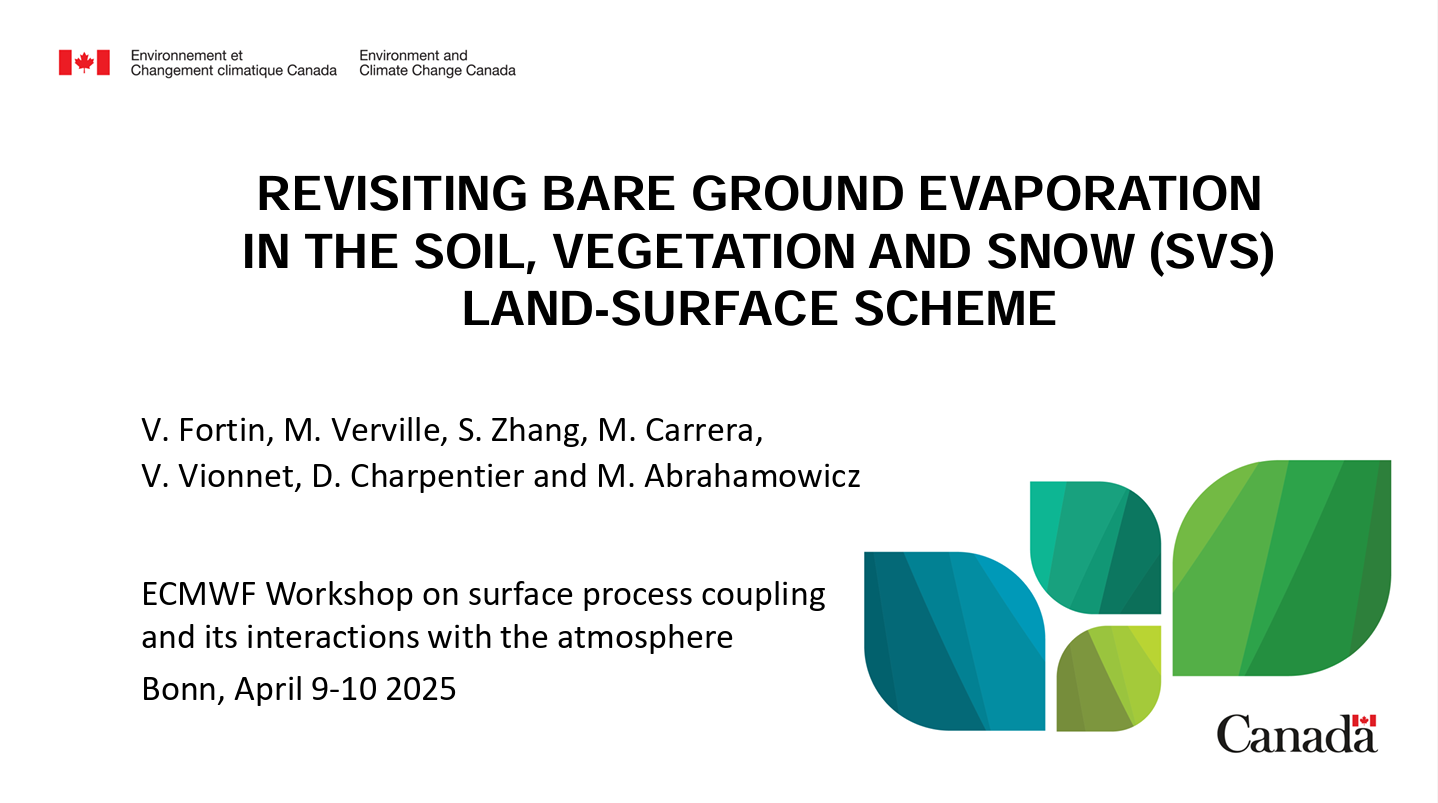This project has been initiated by Environment and Climate Change Canada (ECCC) in 2022 with the objective of delivering a new hi-resolution, short-range Numerical Weather and Environmental Prediction (NWEP) system that can be used for both weather and water forecasting at the continental scale. Implementation is currently planned for early 2027. The domain covers continental Canada as well as the northern half of the United States of America. The system will provide hourly forecasts for up to 48h on a 2.5km grid, with four updates per day. This new system will replace the existing configuration of the High-Resolution Deterministic Prediction System (HRDPS).
A major deficiency of HRDPS is that it relies on an outdated surface scheme implemented in 2011, designed for weather forecasting and too simplistic for environmental prediction. HRDPS also relies on a land-data assimilation system that does not make use of remotely sensed data that is critical for hydrological applications, such as radar quantitative precipitation estimates, soil moisture data and snow cover information.
The Modernization of Surface and Atmospheric components in the HRDPS (MoSA) project aims to jointly improve the representation of both the surface and the atmosphere in the model. A key objective is the implementation of the SVS (Snow, Vegetation and Soil) surface scheme and CaLDAS-Sat (Canadian Land Data Assimilation System for SATellite data), both of which have already demonstrated their value in offline applications supporting hydrology and agriculture. At the same time, the modernization of the atmospheric physics stands as a critical pillar of the project, ensuring a coherent and coupled enhancement of the forecasting system.
This is not the first time that we attempt to upgrade the land-surface scheme of ECCC’s weather forecasting model. In the past, proposals to improve this model were coming from individual research group: dynamics, atmospheric physics, land-surface physics, land-surface assimilation, atmospheric assimilation or ocean physics and assimilation. Multiple attempts failed, in part because there was limited interaction between the different groups during these attempts. This led to the creation of the MoSA working group, a new collaborative and incremental approach that involves multiple research groups in order to propose a common set of innovations for the HRDPS, including a new and up-to-date surface physics and assimilation components as well as a new atmospheric physical package. It will also include updates to the dynamic and atmospheric assimilation.
If successful, this project should lead to significant improvements to both weather and water forecasts, as well as a reduction of the latency of hydrological forecasts, because the runoff forecasts from the land-surface model embedded in the HRDPS should be suitable for flood forecasting. Other important outcomes of this project are re-building trust between the different scientific communities involved in HRDPS development as well as providing a canvas for future collaborative projects. Hence, following this project, ECCC expect to be able to significantly reduce the time required to bring innovations to operation in NWEP.



